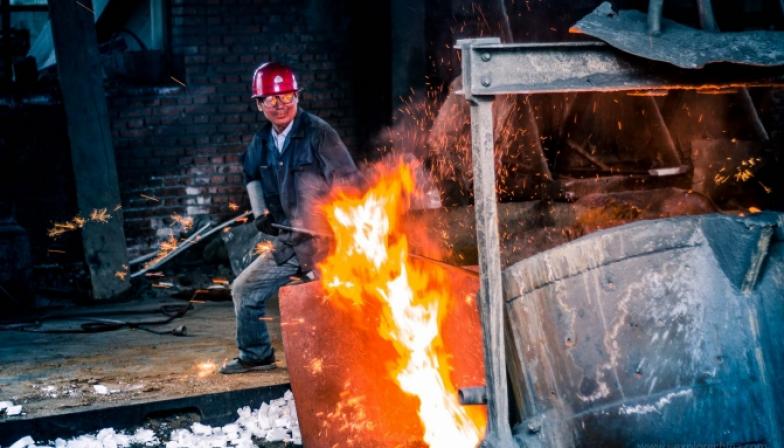An official gauge of China's steel industry declined in September but stayed in solid expansion territory, as the industry faces upcoming production restrictions aimed at reducing choking air pollution over the winter.
The Purchasing Managers' Index (PMI) for the steel sector fell to 53.7 in September from 57.2 in August, data from the China Federation of Logistics & Purchasing (CFLP) showed, holding for a fifth month above the 50-point mark that separates growth from contraction.
A sub-index for new orders declined sharply to 60.6 in September from 66.6 despite September being a typically strong month for the steel industry, the CFLP said.
"Considering overall demand was quite low in August due to the impact of high temperatures and environmental inspections, the September recovery was not very big. The usual features of the high season have not been obvious," CFLP said in a statement.
The production index declined to 59.8 from 61.7 in August but still expanded for the eighth consecutive month, while the new export orders index dropped to 40.5 from 45.0 in August, indicating a faster decline in orders from overseas.
The federation said high prices for coke and other raw materials, along with limits on steel production in North China during winter months, meant steel firms were reluctant to boost inventories of raw materials and that production could slow going forward.
Inventories of finished goods remained below the 50-point mark, but rose to 46.3 from 42.1 in August, with the federation adding that with demand somewhat weaker, some output was going into building inventory.
"With infrastructure and property construction remaining stable, the trend is positive for major steel-consuming manufacturing sectors. Acceleration of construction related to the Belt and Road initiative may also add new demand for steel," CFLP said.
"At the same time as winter restrictions on output in North China for environmental protection begin to be implemented in October, supply and demand are both expected to see some softening. Steel market prices are expected to fluctuate at a high level, with some room to increase."



